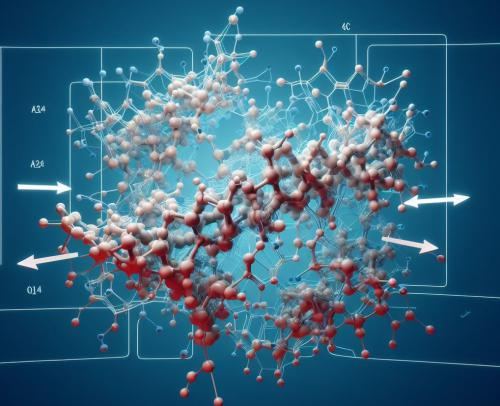
GROMACS Tips and Tricks:How to perform principal component analysis on GROMACS trajectories?
PCA is a technique for reducing the dimensionality of a data set by projecting it onto a few orthogonal axes that capture the most variance in the data.
PCA can be useful for analyzing the conformational changes and motions of biomolecules in molecular dynamics (MD) simulations. By applying PCA to the MD trajectories, we can identify the dominant modes of motion, visualize the essential dynamics of the system, and compare different trajectories.
To perform PCA on GROMACS trajectories, we need to follow these steps:
- Prepare the input files for PCA. We need a structure file (e.g., .pdb or .gro) that contains the coordinates of the system, and a trajectory file (e.g., .xtc or .trr) that contains the coordinates of the system over time. We also need an index file (e.g., .ndx) that defines the groups of atoms that we want to include in the PCA. For example, we can choose to include only the protein backbone atoms, or the protein and the ligand atoms, depending on our interest.
- Run the PCA command in GROMACS. The command is:
gmx covar -s structure.gro -f traj.xtc -n index.ndx -o eigenval.xvg -v eigenvec.trr -av average.pdb
This command will calculate the covariance matrix of the atomic fluctuations, diagonalize it to obtain the eigenvalues and eigenvectors, and output the results in different files. The -s option specifies the structure file, the -f option specifies the trajectory file, the -n option specifies the index file, the -o option specifies the output file for the eigenvalues, the -v option specifies the output file for the eigenvectors, and the -av option specifies the output file for the average structure. The command will also prompt us to select the group of atoms for the PCA.
- Analyze and visualize the PCA results. We can use the gmx anaeig command in GROMACS to perform various analyses on the eigenvalues and eigenvectors, such as plotting the cumulative variance, projecting the trajectory onto the PCs, calculating the free energy landscape, and more. We can also use external tools, such as VMD or PyMOL, to visualize the eigenvectors as arrows or animations, and to compare the average structure with the original structure.
By performing PCA on GROMACS trajectories, we can gain insights into the conformational dynamics and flexibility of biomolecules, and identify the key motions that are relevant for their function.
Pars Silico Molecular Dynamics Simulation Services
Experience the power of simulation with our molecular dynamics services at molecular dynamics simulation services at Pars Silico Bioinformatics Laboratory. Our advanced computational techniques allow you to observe and analyze molecular interactions in unprecedented detail.
Tags: PCA , Molecular dynamics








